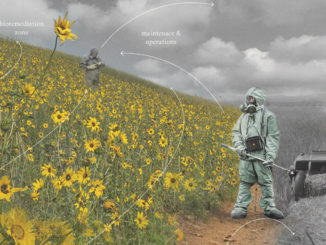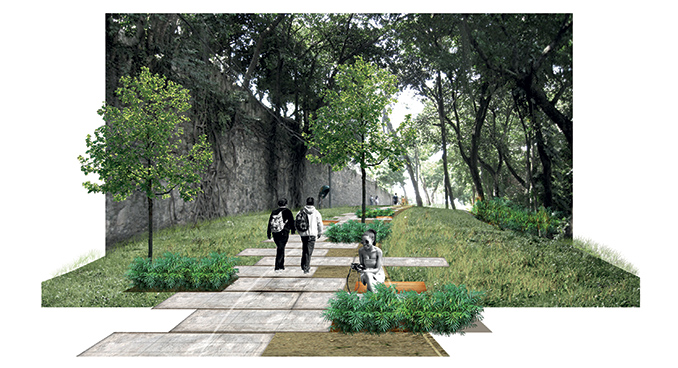
Rio de Janeiro is known as the epitome of diversity. It is a true melting pot of cultures throughout its history; however, the urban landscape does not reflect this. The chaos of the city hitting the peacefulness of the ocean, the vegetation of the hillsides surround the extreme density of every buildable square meter and the obvious rich and poor neighbourhoods are all results of extreme dichotomies.
The park Quinta da Boa Vista, unknown to most tourists, is a great example of this spatial segregation. As a rare green space in Rio de Janeiro, it is situated in between the economical downtown and the favela Mangueira, which means that the park is consistently used by the totality of the social spectrum. Because of this unclear function and diversity, the park feels like a series of isolated spaces more than a unified place.

Where is the parc quinta da boa vista in Rio?
The project proposed within the boundaries of the landscape and utopian architecture studio at the Pontifica Universidade do Rio de Janeiro sees this as an opportunity to transform the park from a series of islands to an urban arquipelago. The human is seen as the link between the diverse urban and social roles of the park. Inspired by Charles Baudelaire’s character of the flâneur, the users of the park are taken as an integral part of the urban and natural ecosystems of the park. Through on-site spatial and visual studies, the islands were deconstructed for the purpose of understanding how the already existing potential could be augmented. The interventions do not take the park as a blank canvas – a tabula rasa – but as a landscape with a potential ready to blossom – a tabula pronta.
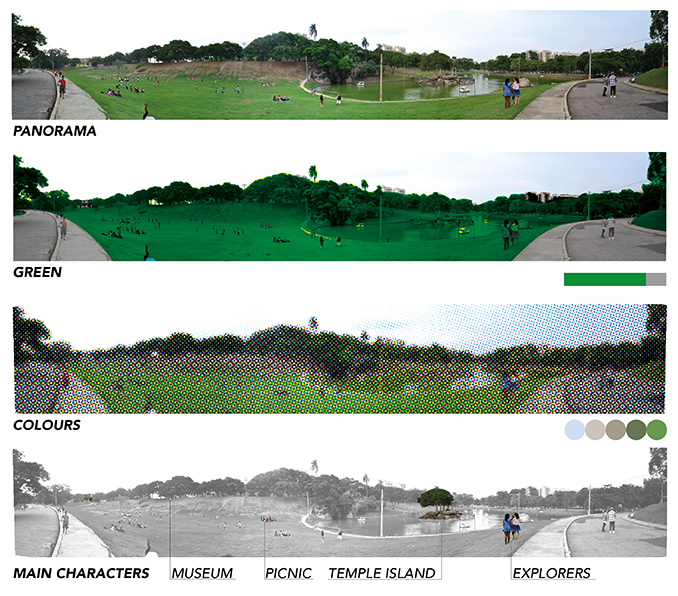
Panorama studies
Thinking of this project as a long term process, the first phase was to define the best path where the flâneur can explore the parc. With the museum as a central point of reference, the path is « sliced » at 2 minutes intervals. Some of these slices on the path become key interventions that permit the reconnections of the different islands, while the space in between the slices are left for the flâneurs imagination.
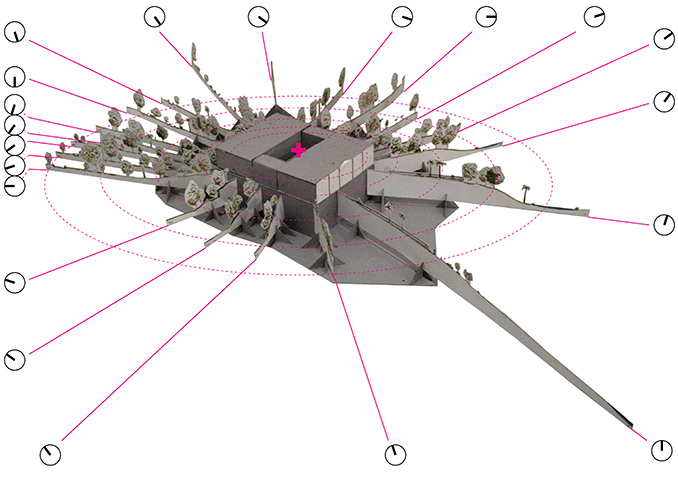
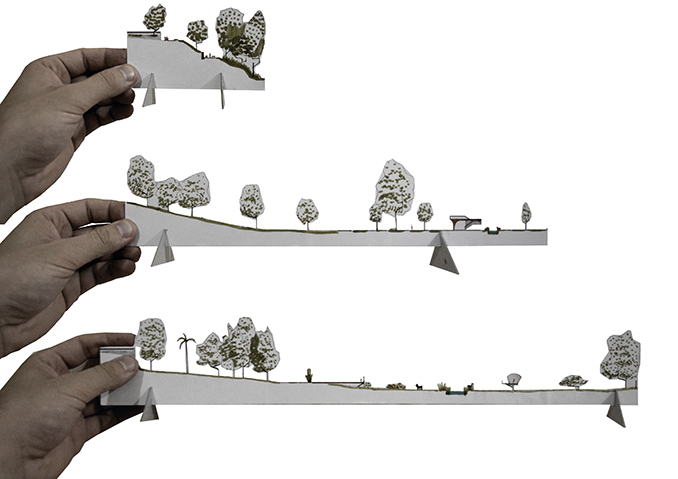
Model with slices and time.
There are four key interventions in the park that help the islands reconnect as an arquipelago. These interventions are always based on the idea of place as a construction of the memory. By examining the situation of the landscape and by interviewing the people that already use it, these interventions amplify the already existing characteristic of each island. For example, the Lover’s valley and the Wonderland are next to each other. To permit the dialogue a forest of artificial trees is placed to punctuate the open path, creating an intimate forest for the couples while the street vendors can use them a selling points for the kids.
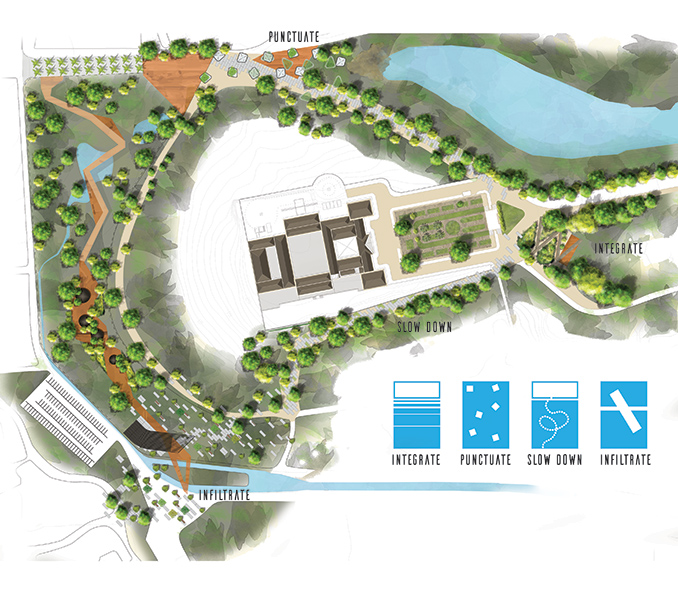
Diagrams
Perspective of wonderland.
The Arquipelago da Quinta shouldn’t be understood as a Gesamtkunstwerk. It is a set of intervention with empty spaces to be filled by the memory and the imagination. By intervening in between the islands, the spaces already used are able to adapt to the changes. These changes are slow because they need to be absorbed by the park’s users. Like a collage, new and already existing elements are combined and juxtapose to amplify each other’s characteristics.
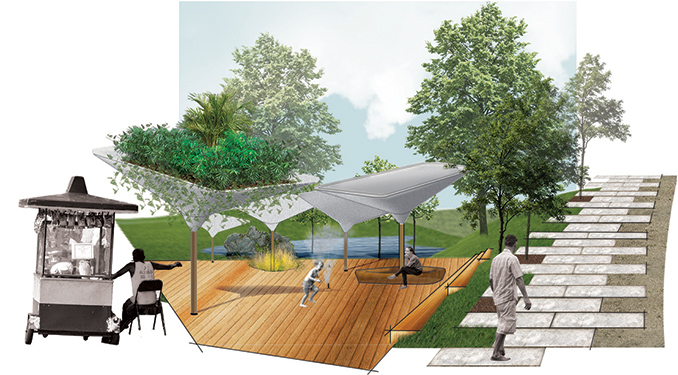
Perspective of Pavilion with favela
By understanding the human as a fundamental specie of the contemporary landscape, the park uses the memory and senses of the contemporary flâneur to reconnect the segregated islands. The Arquipelago da Quinta is a public place where the social and urban dichotomies are transformed into powerful opportunities. The diversity that Rio de Janeiro has to offer is reflected again in its urban landscape.
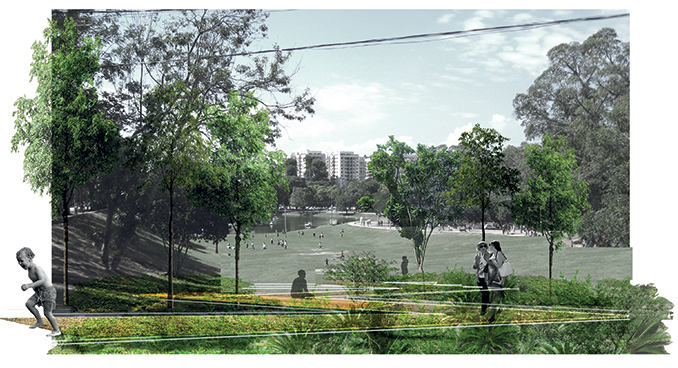
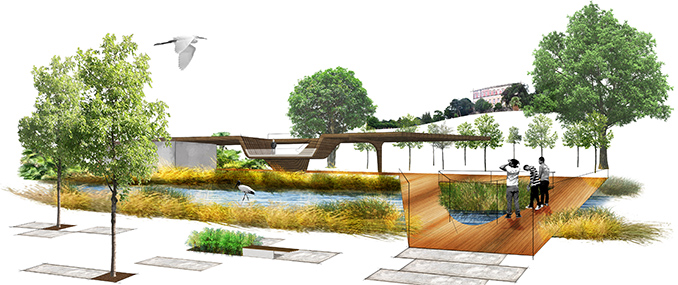
Archipelago of the Quinta da Boa Vista
Location | Rio de Janeiro, Brazil
Design firm | JEAN-FRANCOIS ALLARD, KATIUSCA MORAIS DA COSTA and ISABEL ANDRADE
Images Credits | JEAN-FRANCOIS ALLARD, KATIUSCA MORAIS DA COSTA and ISABEL ANDRADE


